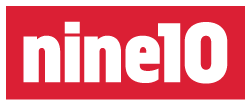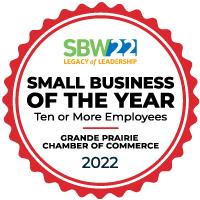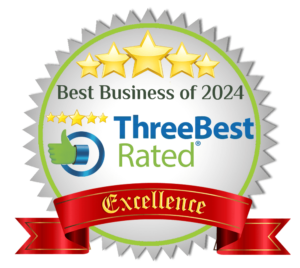– The following article was prepared for, and reposted from the AthletesCAN Athlete Handbook –
My name is Ryan Blais, I am a retired member of the Canadian Freestyle Ski Team; an athlete from the discipline of Aerials. During the ladder years of my career I gained some notoriety from my strategic use of the web and, more specifically, by how I was leveraging social media to share my athletic journey. Although athletes leveraging social media in 2014 is now commonplace, this was certainly not the case back in 2006-2010 when I first started to experiment with these powerful new platforms. At the time, there were very few athletes successfully utilizing these amazingly powerful and accessible new tools.
Naturally, upon my retirement from sport, I followed this new passion and founded a social media consultancy called GoSocial, which has since merged with the marketing agency nine10 Incorporated. In 2011, I was given the opportunity to present at the AthletesCAN Forum, a chance for me to share the lessons I had learned about how athletes can leverage social media. My presentation at Forum was followed up with a resource document that I created; a social media cheat-sheet, of sorts. You can still view the original document as well as a video I created (much of it still applies, so you may want to take a look), however I’d like to take this opportunity to provide an update for 2014-2015, making an effort to not regurgitate portions that were already covered in 2011. Many things have changed, many have not, but what’s abundantly clear is that social media remains a tremendous opportunity for amateur athletes—a way for them to share their athletic journey with the world!
Let’s get started…
1. Set goals. Identify, at the outset, what you’re trying to achieve.
You’re an athlete, I don’t have to tell you the importance of setting SMART goals. You already understand the importance of having a strategic plan, one that outlines your optimal path towards success. Leveraging social media is no different, you’ll want to establish your goals before you get started. If you haven’t done this yet, it’s not too late to review. Ask yourself, why you’re looking to leverage social media? It might be one of the following:
- simply to get noticed
- gain notoriety
- attract media attention
- build a brand or specific reputation
- connect with fans or build a fan base
- inspire & motivate, share your journey
- provide exposure for sponsors
- jumping on the bandwagon seems like a good plan
There are countless reasons why you might be interested in social media and there’s generally no right or wrong reason. Understanding WHY, however, will help you to establish some specific strategies and tactics as you move forward. When I embraced social media as an athlete, my goals were to:
- Get media attention (they were generally ignoring me)
- Get exposure for my sponsors (needed to show them value)
- Develop my athletic persona (build brand equity)
Understanding why I wanted to leverage social media helped me to craft a strategy that allowed me to be successful in reaching my goals.
2. Establish your athletic brand.
Once you establish your goals, you’ll want to consider your athletic brand (more on this in point #3). How are you going to present yourself to the word? How will you differentiate from your fellow athletic peers? Will you even be noticed in the sea of other athletes, in the overcrowded news feeds of social media? Establishing an authentic and consistent brand will allow you to put your best foot forward and, if applied consistently, will help you to build brand awareness and an emotional connection. There’s a good analogy about branding, one that is well described here that might be helpful as you get started.
The key thing that you’ll want to consider is that you should be intentional with your brand, make sure it’s well thought out and that, once you jump into the world of social media, you’ll present yourself professionally and consistently from the start. For me, my athletic persona was Airblais, and I consistently presented this brand on every channel/platform that I leveraged. I also established an approachable, conversational tone and took the angle of a storyteller, continually inviting my fans and the media “behind the scenes” and into the trenches with me; a way for them to be a part of my athletic journey. I even established a tagline, Come Fly With Me (an invitation to join my journey), which subsequently became the name of my Legacy Fund that I established, carrying my athletic brand forward, even after my retirement from sport. Maybe your brand strategy will be similar, maybe not. Other athletes I admire have used social media and their athletic brand to connect with fans and media and to direct the attention to a larger cause, such as environmental sustainability or general health, wellness and personal empowerment. Everyone will/should have a unique, authentic brand approach – don’t force it, but do take the time to flush this out and make it your own!
3. Everyone has to draw the line somewhere. You decide.
The realities of the always-on, never unplugged, internet-in-your pocket era is that it’s no longer possible – as an elite level athlete – to remain hidden from the web, even if you tried! Social media is not for everyone and you may choose, as an athlete, to simply not engage in this arena. That’s ok, but you should understand that this won’t exempt you from “being a part of the conversation“. In the simplest example, it’s likely that your National Sport Association will include you and your performances in their social media communications. As an athlete, you’re representing your city, province or, if you’ve risen to the highest levels, your country. At events like the Olympics, for example, you are in fact formal representatives of Canada – people are watching, and they’ll take to social media to discuss.
Where am I going with this? Simply put, regardless if you’re fully plugged in with your own active strategy, or just passively along for the ride, you’re going to have instances (likely many over your entire career) where your athletic pursuits are covered on social media. Whichever the case, you’ll want to establish very early on, both for yourself and for those that will be sharing your story (ie: NSA & media) what you’re choosing to make public (your athletic persona) and what you choose to keep private (personal persona). For some, this may be a thin line with no real difference, whereas for others their athletic/personal lives may be worlds apart.
In both my personal & professional opinion, I recommend that athletes draw the line firmly around themselves, with a wide enough circumference to breath, and one that offers a decent amount of privacy. Keeping a portion of your personal, off-the-field life is advisable. You may choose to publicly share some off-the-field aspects, maybe your charitable activities – for example – but I do recommend keeping some aspects private, for close friends and family. If you’re like most athletes, you probably have your Facebook profile (your personal account) and you may or may not yet have considered creating a public Facebook Page. These are very different types of accounts that Facebook offers and, as an athlete, you should become familiar with both. Generally speaking, keep the personal profile fairly ‘locked down’ in terms of privacy settings and use for connecting with friends, family and the like. The Facebook Page, on the other hand, is a great platform to share your athletic journey, publicly with the entire world. You don’t want to share you entire private, off-the-field life with the world, do you? We’ll all draw the privacy line in a different place, just make sure you consciously choose where you want your line to be.
4. Develop a content strategy:
You’ve likely heard this before, Content is King! You won’t be creating great content for your audience, however, without developing a strategy first. Simply put, developing a content strategy will aid you in identifying opportunities of who, what, where, when to share, as well as a set of best-practices (rules) for why and how. A few tips in this area can go a long way to helping you put your best foot forward on your Facebook Page: *note: the examples below are specific to Facebook pages, however some will apply generally to other social mediums as well.
- Develop a daily/weekly routine
- Consider scheduling posts
- Take advantage of back-dating posts
- Use the free Facebook Pages app
- Apply the 70/20/10 rule (for them/conversations/about you)
- KISS – try to keep your posts short & sweet
- Share rich media (links, photos, videos, audio, etc)
- Develop recurring ‘themes’ for your posting
- Decide what to post to your personal profile vs. public page
- Build up a bank of stories, ready to post/schedule at any time
Creating good, compelling content isn’t easy but it becomes much easier once your have a ‘conversation calendar’ in place, a solid routine and an understanding of the types of stories you wish to share. You’ll also make your life a lot easier, and your stories more compelling if you invest in a few key tools (more on this in point #6). Creating good content is hard, but there’s some good news. You don’t have to carry the entire content-burden on your shoulders, curating content can be part of your strategy as well.
5. Content is King. To Curate is Divine.
You may have heard the cliché “sharing is caring“, and this applies to curating content. As you develop your content strategy, understand that you don’t have to be the creator of all your own original content. Rather, it’s much more compelling if you introduce a mix of curated content from other sources that you re-share to your audience. Think of a museum curator. Generally speaking, the curator is not the artist, they are not responsible for the beautiful pieces of artwork (content). Instead of content creators, they are the experts with divine taste that have brought the best of the best together, often providing commentary or additional insights in its presentation. Social media is very similar. You have the opportunity to find great content and to re-share it. Adding your own personal commentary and “joining the conversation” will generate interest, start conversations and will have the positive effect of shifting you away from a me, me, me content strategy.
No one likes someone that can only talk about themselves; broaden your horizon. Good examples might include re-sharing posts from other athletes, mentors, sports media, etc. I’m a big proponent of curated content, but there are a few things that you’ll want to keep in mind. Share compelling content, stuff that people will actually care about, and don’t always go back to the same well – keep it fresh. Also, remember that once you share it, you own it. Sharing will come across as a tacit endorsement, so be conscious of what you choose to share. If there’s some conversations you’d rather not have in public about a controversial subject, best not re-post someones editorial about it.
6. Invest in tools to capture & create rich media.
When it comes to sharing, it doesn’t matter if it’s your original content or curated from another source, using rich media will make it far more compelling to your audience. The reality is that posts that include pictures, for example, will perform dramatically better than posts will just text. Add video to the mix and you’re even more likely to engage you audience and see your post spread from news feed to news feed. Simply sharing a link to a great article also counts as rich media, all the better if that articles includes photos/videos. Recording a post-competition interview (with permission) and then posting an audio clip is another great example or creating and sharing rich content. In order to post this rich media, however, you need to first capture it. In some cases, you’ll also greatly increase it’s level of polish by tinkering with it before release to the world.
In my opinion, there is a new minimum cost of entry for athletes in terms of equipment needed to excel – at least within social media. You’re going to need a modern smartphone, a laptop with wifi connection, a good point & shoot camera and – if you’re really looking to be progressive – a GoPro camera or similar POV device. From there, you’ll then want to invest a couple bucks (literally) on some very powerful apps/programs that will allow you capture, edit, share various types of rich media. Using iMovie, as an example, will help you add a polish to your videos before you post. Having a consistent watermark or intro animation will provide a consistent brand for all your videos. Using Soundcloud will allow you to easily record and share audio files. Cool apps like SpinCam will let you share your 360 virtual world in just a few clicks. I’ve even seen some athletes that have invested in remote control Quadrocopter with GoPro mounted cameras, allowing them to capture amazing footage that was only previously possible by professionals with thousands of dollars in equipment. Invest in the relatively inexpensive equipment/tools and use them to their max – be creative and share your creations!
7. Build your online hub.
So here we are at point #7 and this is the first time I mention building something, actually creating an online presence. We covered content strategy for Facebook in points #4 and #5 and I should make clear that, in a best case scenario, you should have your goals and strategies in place before establishing your online presence. For many of you, you’ll already have an online presence established. No worries, just be sure to re-visit the strategic side of things before going much further. Let’s start with creating your online hub. By hub, I mean the central part of your online presence, the place you call home, you central repository for all of your content. This is where you have full control of your brand, your message, and it’s your chance to thanks sponsors, create media archives, etc. Much of this can be done these days via a Facebook Page, however there are still many advantages of having your own website at www.YourName.com & .ca.
Websites don’t have to be complex, but you should have one, even if you’re planning on primarily leveraging social media. Websites are another minimum cost of entry factor, in my opinion, and a great way to be discovered via search engines (assuming you’re keeping your website update to date with fresh content). Once people visit your site, you should offer them one-click ease to connect with you on the social media platform of choice. On visitor may choose to follow you on Twitter, another may Like your Facebook page, whereas another may choose to connect with you professionally on LinkedIn. All of these channels, and possibly more, should be linked to your online hub. There are many tools that allow you to create very simple, yet elegant websites for free or for reasonable monthly fees if you’d like to remove the ads. Examples include Wix, Weebly, Virb, SquareSpace and, for those that want a bit more power and flexibility, WordPress. nine10 Inc. develops websites primarily on WordPress as we build sophisticated websites for companies. For the most part, however, as an athlete you won’t need a sophisticated site and it’s likely that one of the many free or cost-effective options on the web will suite your needs just fine. If you want a very high level of polish or special functionality, consider working with a professional web designer.
8. Strategically select your platform(s) of choice.
Now that you have your online hub created at www.YourName.com, it’s time to consider establishing a presence on one or various social media platforms. A word of warning, this can become very overwhelming, very quickly. You have many platforms to choose from including: Facebook, Twitter, LinkedIn, Instagram, Youtube, Pinterest, Soundcloud, Tumblr, etc, etc. Very quickly you’ll encounter choice-overload and it’s important to consider which platform(s) you choose based on where your ideal audience can be found, as well as a consideration of the ‘utility’ that the service provides. For example, if you’re looking to host/share your videos online, you’ll want to immediately consider Youtube or Vimeo as an alternative. If you’re looking to professionally network there’s no better place to start then LinkedIn. Looking to follow and engage with various public figures, turn to Twitter. Building relationships and sharing content with a general audience, consider Facebook!
You’ll need to very seriously consider the amount of time and resources that are going to be required to keep these platforms up to date. Some platforms like Youtube are fine to just sit there, adding new videos when you have them. Facebook, on the other hand, will require you to create/curate content on a regular basis, including sharing the content that you’ve created and uploaded to your video utility of choice. At risk of adding another cliché; if you want to maintain a social media presence, you need to be present! Don’t underestimate how much time and energy this will take and, if in doubt, take the dip-your-toe approach and start slowly. Some of you may be extra keen, digitally savvy or early adopters. If so, more power to you, just remember that you should maintain brand consistency amongst your various platforms and develop unique content strategies for each platform. Also, avoid common mistakes such as identically posting the same content to different platforms like Facebook and Twitter.
9. Connect the pipes.
With your website as the hub of your online platform, the social media platforms that you’ve set up with will act like the spokes on the hub, reaching out and extending your reach. Without getting too fancy, make sure to link your hub to all of your social platforms, and where possible, link back to your hub. Also, without too much effort, you’ll likely be able to add ‘feeds’ to your hub that allow it to pull content automatically from your social accounts, into your hub. You’ve likely seen this before. You’re on a website and notice in the sidebar or as a ticker in the footer, a scrolling feed of most recent Tweets, recently uploaded Youtube videos or the like.
Notice that I’ve flipped back and forth between the term hub and/or website. In actual terms, I do mean website but there are some great new services available that act like very simple, one-page websites or what I prefer to call ‘connect pages’. Examples of these simplified website are services like About.me or a great Canadian service, built by a fellow athlete called Medali.st. These connect pages allow you to create a few simple ‘about me’ pages, thank your sponsors and, most importantly create a very simple site that imports all of your social feeds into one convenient hub. This may go against the grain (since my agency builds websites), but if I was an athlete again, I would not develop a sophisticated website, but instead create a simple hub on Medali.st and establish a strong, consistence presence on various social platforms. Of course, I’d do so following all of the rules/advice I’ve outlined so far!
10. Window shop for a while, learn from the best.
This tip is quick and simple. Try before you buy. Imagine that you had a $1,000 to spend at the mall on new clothes. You’d likely check out various shops, price compare, try on some of the clothes and ask some questions to the store clerk. You likely wouldn’t charge right in, throw down you cash and spend your money without a bit of consideration. Same goes for social media. When nine10 is advising clients that are getting started on new platforms, we suggest that they spend the first week or more “window shopping”, paying attention to what others are posting, observing what looks like good content vs. poor content. Strategically follow and observe some of the pros and try to emulate them, applying your own personal style and their best-practices. The simple truth is that social media is not complicated, it’s just overwhelming and feels like drinking from a fire hose. Ease your self in, listen before you speak and when you do decide to join the conversation, make sure that you have something relevant and compelling to add. In all cases, regardless of platform – quality over quantity, always!
11. Jump in with both feet. Create & share rich media.
This is where the fun starts and you get right into the mix of it. You have your hub set up, it’s linked up to your social platforms of choice, you have a sense of the brand you wish to put forward, backed by a solid content strategy and (phew…), you’ve invested in some new equipment to capture and share your rich media. The challenge you’ll be faced with shouldn’t be “ah oh, what am I going to post today?“, rather it should be the fantastic problem of “which of my amazing pieces of content and back-story will I share with my audience today?”.
As elite level athletes, you all have so many great opportunities to capture amazing content, share unique experiences and to find audiences online that you can build meaningful relationships with. You’ll want to be careful that you don’t go over board with all your great content, sharing too many of your great experiences at once. Very quickly (and quite inadvertently) this can become a me, me, me content strategy which, as you can imagine, won’t be well received by your audience. Remember the 70/20/10 rule from point #4. About 70% of the time, try to post and engage with content that is for your audience and that they’ll generally cares about and are passionate about. It helps having a common cause, for example, that you can publicly support and build conversations around. About 20% of the time, specifically reach out to your audience, engage them in conversation, ask them questions, visit their online hub, read/watch their content. We call this portion engaging your audience. Finally, you should follow the general but flexible rule of posting about yourself, self-promoting only about 10% of the time. Many athletes (and companies for that matter) unfortunately take the 90/5/5 approach. You can do better than this, and you’ll build more meaningful relationships along the way and reach a larger audience while you’re at it.
12. Bypass traditional media. Feed traditional media.
When I took up the use of social media as an athlete I had an explicit goal of getting attention from the media (such as this video that gained quite a bit of attention) and altogether trying to circumvent having to go through them to reach large audiences. For me, the reality was that the media was more interested in paying attention to my World Champion, Olympic medalist team mates. Unless I was on the podium that week, it was very unlikely that the media was reaching out to me and covering my story. What I discovered is that for the first time, it was becoming very possible to not have to rely solely on the media with the microphone or camera in front of me to reach large audiences, but that I could build a core following of social followers, and through them, reach a massive audience.
Have you heard the concept of 6 degrees of separation? Well, within the world of social media, specifically Facebook, this has been digitized and is now 4 degrees of separation between each Facebook user. To understand this better, let’s change the word ‘degrees of separation’ to ‘shares’ and you’ll see that once you post content to your Facebook Page, your only 4-shares away from every other Facebook user in the world. This is a bit of a simplification, but is a good way to understand how this interconnected web of digitally networked people can allow your content to “go viral” in a few quick clicks. Of course, that’s assuming it’s great, relevant, inspiring or entertaining content!
It might sound like I have a slight against the media, but I can assure you I feel quite the opposite. By leveraging social media not only was I reaching large audiences on my own, I was also finding that some of my best followers were actually in the media core. I was inadvertently making it very easy for the media to research me, get to know me both in terms of my athletic performances, but my personality as well. It was actually social media that allowed me to finally build strong relationships with the media; as much as I would have preferred that it was simply my athletic performances they couldn’t resist covering. A great example is the late, great Randy Starkman who I was privileged enough to get to know before his passing. Randy first took interest in me because he simply had so much easily accessible content to build off of, it was all out there on the web, waiting for someone to take hold of it. This led to his curiosity of how I was building my online presence and then into a feature story, and later developed into a relationship where Randy would reach out to me on occasion for an opinion, a quote or perhaps another feature story. In the end, I was lucky to call him a friend, and I can see that he genuinely cared about me as he was the kindest, most trusting media partner I had during the most difficult time in my career.
The lesson from my own play book is that social media will give you the chance to reach large audience without the media, but if used correctly, it will also allow you to build great relationships with them. Let’s face it, every person I’ve met in the media has one thing in common – they’re super busy and over inundated. By making it easy to write about you, sharing amazing snippets of your journey, you’ll make it that much easier for them to pick up the phone and call you! If you’re lucky, you’ll also get the chance to build great friendships and what felt like media partners, part of your extended team.
13. This is a tool, not a toy. Know the rules.
**2016 UPDATE**
View the IOC’s rules for Social Media here!
Don’t underestimate how powerful social media is and how quickly you can reach large audiences, accidentally. That off-colour post you just made, oops – it went viral, and it didn’t present you in the best light. Had a great weekend with friends and you were tagged in some out-of-context photos…oops, that’s not gonna go over well. The reality is that you can’t control everything (someone else might post a picture of you), but there are certain written and un-written rules you can and should follow.
First off, draw the line between your online public vs. private life, as per point #3. From there, simply follow social norms, avoid taboos, steer wide of politics, race, religion or other controversial issues. If you’re comfortable digging in, do so but make sure you do so knowing what you’re putting out there and that you’re willing to stand by it. I heard a quote before but I’m not sure of it’s source. “Don’t ever put anything in an email you wouldn’t be comfortable having read back to you in Court“. This applies to social media, except amplified.
The internet is like an elephant, it never forgets! In terms of rules, I’ll keep the unwritten ones to the side for now, as they do tend to be self-evident. If you’re not clear of what these might look like, there are 100’s of great resources online that you can quickly read through. In terms of formal written rules, check with your NSA as they may have some that form a part of your athlete contract. Also, some international competitions like the Olympics have specific rules that outline what’s permissible and what’s not. AthletesCAN has a great article, written by the Sport Law & Strategy Group that outlines social media guidelines vs. policy. Generally speaking, these rules, guidelines, policies (whatever you want to call them), they’re generally there to protect you, so take them seriously. If a rule seems unfair look into it a bit deeper and don’t take anything that’s handed down to you on authority at face value. AthletesCAN is a great source to help you navigate the confusing and sometimes controversial waters, after all they are an organization whose core mission is athlete advocacy.
14. Stay current. Be a life-long learner.
There is no shortage of information and resources available to you on the open web and through organizations like AthletesCAN. If you’re looking to increase your skill set in any area, such as building your own website, you’ll have no problem finding free resources. Many new services pop up all the time, taking something that was previously complex and expensive, making it super intuitive and cost effective. During my athletic career I was fully self taught and learned simply by jumping in the trenches and experimenting. Luckily, enough athletes have now mastered social media that there are a whole set of best-practices and advice columns available to you, not unlike this one! A simple Google search will often get you halfway there. A sample search like ‘what social media services are best for athletes‘ will pull up many relevant articles, enough to get you started if you didn’t have this article. Looking to build your own website? Head on over to Google and you’ll find lots of great alternatives to the ones I suggested in point #7.
15. Athletes retire. What’s next?
As an athlete you’ll likely have so many wonderful experience, build a ton of transferable skill sets, travel the world and develop a set of experiences that will make you uniquely qualified for many great career paths, post athletics. That said, it’s not always the easy thing to make a major transition. Who do you call first? Have you announced your retirement, is your phone ringing? If there’s one area that I believe I missed out on during my career, it was leveraging social media to develop my professional network. Don’t get me wrong, I was pretty plugged in so I had a LinkedIn account, but I didn’t leverage it as I could have. I can’t recall how many missed opportunities I had at press conference, sponsor banquets, community events and the like where I met very influential people, collected their business card and then ditched it at the hotel.
These days, the VP of Communications or the CEO of company ‘X’ is likely on LinkedIn. You made a great first impression, maybe shared a great conversation with them at the medal ceremony, why not follow up online? If there’s one lesson I’d like to leave you with is that embracing social media during your athletic career is just the start. Be mindful of what’s next. The internet doesn’t forget, so make sure that what you put out today will also represent you well into the future. Also, take the opportunity to connect with those influential people you meet along the way, along with all the great friends you make along your journey…
Have fun, stay safe, and share your athletic journeys with the world. I’ll be following along in my newsfeed…










